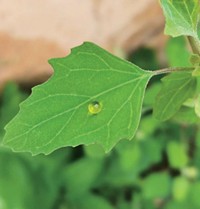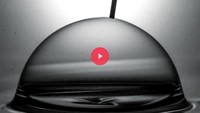Advertisement
Grab your lab coat. Let's get started
Welcome!
Welcome!
Create an account below to get 6 C&EN articles per month, receive newsletters and more - all free.
It seems this is your first time logging in online. Please enter the following information to continue.
As an ACS member you automatically get access to this site. All we need is few more details to create your reading experience.
Not you? Sign in with a different account.
Not you? Sign in with a different account.
ERROR 1
ERROR 1
ERROR 2
ERROR 2
ERROR 2
ERROR 2
ERROR 2
Password and Confirm password must match.
If you have an ACS member number, please enter it here so we can link this account to your membership. (optional)
ERROR 2
ACS values your privacy. By submitting your information, you are gaining access to C&EN and subscribing to our weekly newsletter. We use the information you provide to make your reading experience better, and we will never sell your data to third party members.
Materials
A Petal's Pull On Water
Surface features make moisture bead up and stick
by Bethany Halford
April 28, 2008
| A version of this story appeared in
Volume 86, Issue 17
When tiny raindrops land on roses, they bead up into spheres but resist rolling off the flower, even when it's held upside down. By examining the surface features of petals, researchers in China have now developed an explanation behind this phenomenon, which they have dubbed "the petal effect" (Langmuir 2008, 24, 4114). Their findings could lead to novel adhesives and coatings.

Lin Feng, a chemistry professor at Tsinghua University, was inspired to study the petal effect after a day out at the arboretum. "I was attracted by the petals with water droplets glittering under the sunshine," she says.
Feng was familiar with the "lotus-leaf effect," wherein waxy micro- and nanoscale features on the lotus leaf's surface cause water to bead up and then roll off, taking dirt and dust along with it. She wondered how a petal's surface features might influence its ability to cling to water.
Feng, along with Lei Jiang of the Chinese Academy of Sciences in Beijing, led a group that focused a scanning electron microscope on the petals of red roses, sunflowers, and Chinese Kafir lilies. They found that the micro- and nanoscale landscapes of these petals feature rough textures. For example, the surface of a rose appears to be covered with wrinkled bumps, each about 10 μm across. This roughness makes the petals superhydrophobic, prompting water to bead up.
As for the petal's adhesive properties, Feng explains that different textures contact water in different ways. Water droplets sit on top of a lotus leaf's nanoscale projections, she says. On a petal, however, the sizes of micro- and nanostructures are larger than those of the lotus leaf, and water droplets will enter these larger scale grooves. "Therefore, water droplets can easily fall off the surface of a lotus leaf, while sticking to the flower's petals," Feng notes.
Feng and Jiang's team also used the petals as molds to make polymer films with the same superhydrophobic and adhesive properties. "The textured films we have made can be used for coatings and functional fibers," Feng suggests.






Join the conversation
Contact the reporter
Submit a Letter to the Editor for publication
Engage with us on Twitter